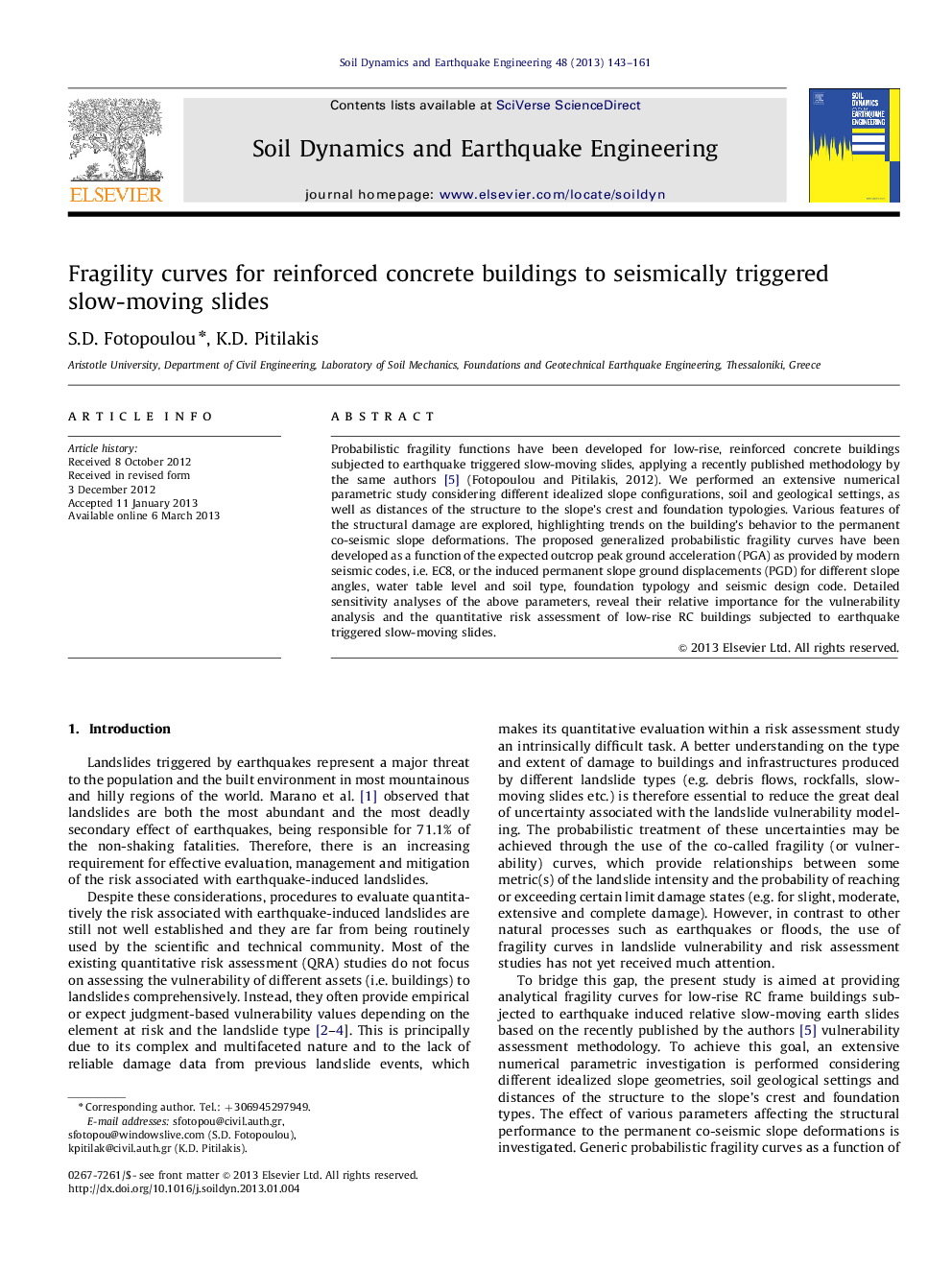| کد مقاله | کد نشریه | سال انتشار | مقاله انگلیسی | نسخه تمام متن |
|---|---|---|---|---|
| 304295 | 512795 | 2013 | 19 صفحه PDF | دانلود رایگان |

Probabilistic fragility functions have been developed for low-rise, reinforced concrete buildings subjected to earthquake triggered slow-moving slides, applying a recently published methodology by the same authors [5] (Fotopoulou and Pitilakis, 2012). We performed an extensive numerical parametric study considering different idealized slope configurations, soil and geological settings, as well as distances of the structure to the slope's crest and foundation typologies. Various features of the structural damage are explored, highlighting trends on the building's behavior to the permanent co-seismic slope deformations. The proposed generalized probabilistic fragility curves have been developed as a function of the expected outcrop peak ground acceleration (PGA) as provided by modern seismic codes, i.e. EC8, or the induced permanent slope ground displacements (PGD) for different slope angles, water table level and soil type, foundation typology and seismic design code. Detailed sensitivity analyses of the above parameters, reveal their relative importance for the vulnerability analysis and the quantitative risk assessment of low-rise RC buildings subjected to earthquake triggered slow-moving slides.
► Numerical parametric investigation of the structure's damage for varying features.
► Significance of slope inclination and soil properties to the structure's fragility.
► Fragility curves for RC buildings to earthquake triggered slides are proposed.
► Effect of additional slope and building parameters on vulnerability assessment.
Journal: Soil Dynamics and Earthquake Engineering - Volume 48, May 2013, Pages 143–161